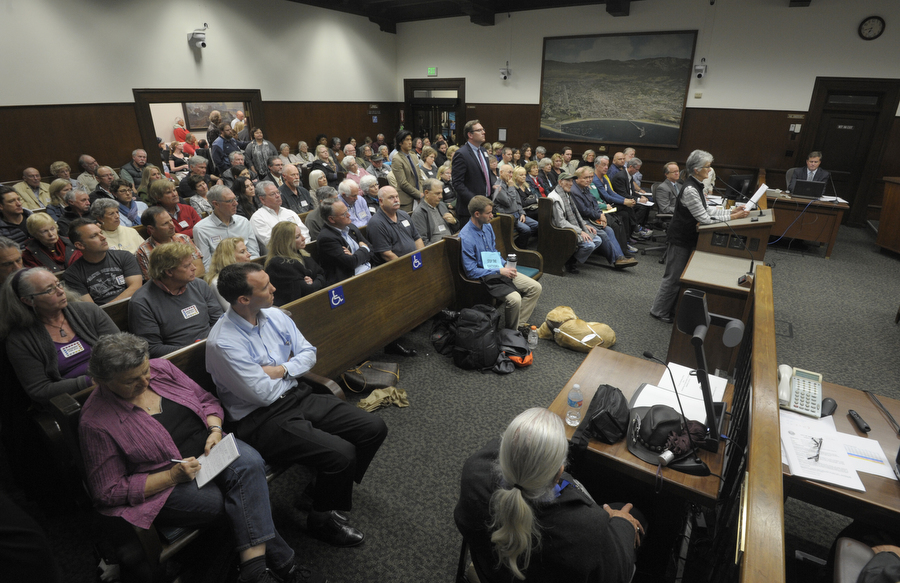Death by Deliberation
Rental Politics Rehash: What Would Silvio Di Loreto Think?

Silvio Di Loreto — chef, photographer, and philanthropist — died two weeks ago. He had a good excuse. He was 91 years old. The poor-boy son of Italian immigrants who flew bomber runs over the South Pacific during WWII, Silvio was a twinkly-eyed koala bear of a man who gave far more than he ever got. And as a real estate mogul who peddled Santa Barbara dirt for a living, Silvio got an awful lot. And he gave me a serious rash.
“If you’re not a radical when you’re 25, you have no heart,” he liked to tell me. “But if you’re not conservative after 25, you have no brain.” Silvio had several decades on me. At best, I figured he was being patronizing. At worst, he was calling me stupid. And with eyes a-twinkle. Or so I thought. In hindsight, maybe his real point was I hadn’t been radical enough. Hard to tell with Silvio.
At every opportunity, Silvio made a point to describe himself as a conservative. Looking back, that was all smoke. In the 1970s, Silvio helped create something called the Rental Housing Mediation Task Force. It was a neutral place where tenants could hash out differences with landlords, thus avoiding the expense of lawyers and judges. It helped keep the lid on, Silvio explained. Over the years, Silvio never left the task force. In 2011, the cash-strapped Santa Barbara City Council — needing a few widows and orphans to toss overboard — tried to hack the task force budget by $60,000. Over his dead body, Silvio declared. Thanks to Silvio’s arm twisting and ear bending, the task force stands today on infinitely firmer ground.
I thought of Silvio last Tuesday when more than 200 people packed the City Council chambers to debate a mouthful of tenants’ rights protections. It was a genuinely historic occasion. It marked the first time in 30 years that tenants’ rights had been seriously debated in Santa Barbara. What took so long? Yes, there are good landlords in Santa Barbara who’ve kept Santa Barbara survivable by refusing to take all they could get. But as these mom-and-pops grow old, retire, and sell out, they’re increasingly replaced by mega management monoliths. Somehow, these operators have stubbornly failed to learn one of life’s basic lessons: Pigs get fat, and hogs get slaughtered.
I got a call last year from someone renting from Meridian Management — all certifiably nice guys — whose rent had gone up twice in six months: from $1,400 a month to $1,795. Meridian explained the property had been sold twice in that time, having been flipped for an enormous windfall. They helpfully suggested I do a story on someone other — and much bigger — than them. More recently, I heard from a compulsive clean-up-the-neighborhood type whose agitations single-handedly increased property values of the “craptastic” two-bedroom apartment — no parking, no living room — she’d been renting on the 400 block of De la Vina by about five million percent. In 2014, her rent was $1,544; last June it was $1,800. Today, it’s $2,395. And no, it did not change hands. So that’s not an explanation.
Yes, rent control was on the menu, but in name only. In reality, it’s not even a hypothetical possibility. At least not until 2020, when it may go before city voters as a ballot initiative. Landlords packed the council rooms as if their lives depended on it, showing up early and snagging all the seats. By the time the tenants showed, they had to stand in the overflow chambers. It made for some seriously awkward body English. What the tenant organizers like Frank Rodriguez with CAUSE — and no, I won’t explain the clunky name those letters stand for — want is a just-cause eviction ordinance. Translated, if tenants pay rent on time and don’t break the rules, they can’t be evicted. If they are — because the landlords want to “improve” their properties and charge much higher rents — then the tenants would be legally entitled to some form of relocation assistance. That already exists but in limited circumstances. Like, if a landlord converts a rental unit to a condo. Or tenants are forced to move out because the habitations are not safe. Or such improvements result in a net loss in the number of rental units. In those cases, tenants are eligible for up to $5,000 in relocation assistance. But those instances don’t cover the boiler-plate gentrification now heating up, in which relatively cheap rentals — affordable by neglect — are scraped to make way for new-and-improved units that are given all kinds of parking and density breaks by city hall for allegedly being “affordable by design,” code-speak for small. These units — generously promoted by city policy — target those making $87,000 or more a year. Lost in the stampede to build rental units are those in the middle, defined as $47,000 and up.
The council did as it always does. It created a task force that will study the issue to death. Stakeholders will be convened. Statistics will be generated and a report issued. The council also voted to put more oomph into rental mediation, Silvio Di Loreto’s baby. What that means exactly, no one really knows. But it sounds good. This course of action, by the way, is exactly what the council did the last time a just-cause eviction ordinance was voted down. That was in the 1980s. Hal Conklin, now running for mayor after a 22-year hiatus from City Hall, was the councilmember who cast the deciding vote. Even ardent supporters of rental mediation question how much more effective the program can be without more legislative teeth.
I have no idea what Silvio Di Loreto might have thought about all this. I know when he died, he was 91 years old. But I also know in his heart, he was always younger than 25.



